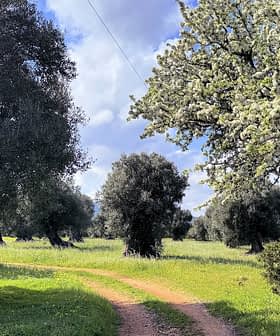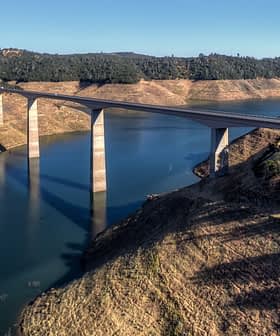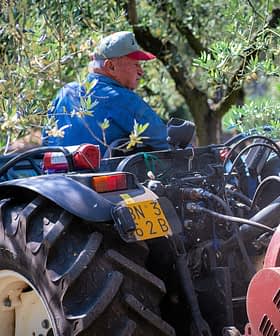The extraordinary drought crippling northern Italian agriculture has been expanding east.
The vitality of plants is being hampered as a result of dry conditions which now cross Europe, from the southern Alps to Ukraine, according to the last update of the Global Drought Observatory analytical report published by the Joint Research Center (JRC) of the European Commission.
In the last 30 years, I do not remember anything not even slightly similar to the current emergency. There are no solutions, and nobody is to be blamed for this. The only way out? Let’s hope it rains.
The precipitation deficit, which has worsened in recent months in the Po and Danube river basins, has dramatically impacted reservoir capacity and hydropower generation.
“Lower water availability in southern Europe makes competition for water uses harder and earlier,” the report’s authors wrote. “Winter crops in Spain and Italy are in sub-optimal conditions, and water stress has already reduced the yield potential.”
See Also:Record Heatwave and Drought in Pakistan Threaten Crops and Olive FarmingAccording to JRC experts, drier-than-normal soil moisture conditions were observed in March in most of northern Italy, Hungary, eastern Romania and southern Ukraine.
The reduction of soil water content, they warned, is a direct consequence of the drought and affects the ability of the plants to extract water from the soil. As a result, the effect on agricultural activities and yields is immediate.
The report emphasized that, in April, precipitation in the southern Alps only slightly reduced the impact of the snowpack deficit in the mountains, which is a crucial contributor to river discharges in late spring.
That deficit in April was 61-percent worse than the average condition of the Italian Alps between 2009 and 2021. Experts believe such a condition strengthens the possibility of an incoming hydrological drought for the following months.
Since the beginning of the year in the region, overall rainfall was down 70 to 80 percent compared with the average of the period. As a result, the Po River is running so low that above-average seawater intrusion is occurring in the basin.
“In the last 30 years, I do not remember anything not even slightly similar to the current emergency,” Umberto Brocca, president of the Irrigation Consortia in the Cremona province, whose water availability greatly depends on the Po River, told local media.
“There are no solutions, and nobody is to be blamed for this,” he added. “The only way out? Let’s hope it rains.”
In Lombardy, one of the most relevant Italian regions for staple crop production, water reserves have dropped by 50 percent so that all crops are now considered at risk.
According to the local branch of Coldiretti, a farmers’ association, water scarcity could cause more than €500 million in damage to local farmers, with even more losses caused to the other actors involved in the food production chain.
The JRC climate experts also noted how throughout Italy, most regions have received considerably less water than average, “and rain is needed to avoid further reduction of the yield potential of winter crops and to create favorable conditions for efficient fertilizers applications and summer crop sowings.”
The extent of the drought and the depth of the emergency both in Italy and southern Europe will be closely monitored. The European Observatory has also warned that given the current situation, it is highly probable that the exceptionally dry conditions will extend for at least one to two months.
Even with their specific resilience to drought, severe drought can affect olive trees, which can reduce yields and even cause damage if associated with prolonged heatwaves.
The report maps show how, as summer begins, several European areas dedicated to olive farming, such as the French region of Provence and Sicily and Lazio in Italy, are experiencing worryingly low soil moisture levels, which is already affecting local vegetation.
“These negative forecasts raise concerns for the evolution of the current drought,” the report’s authors concluded. “Monitoring its evolution in the next months is essential for risk and impact assessment and early warning.”








